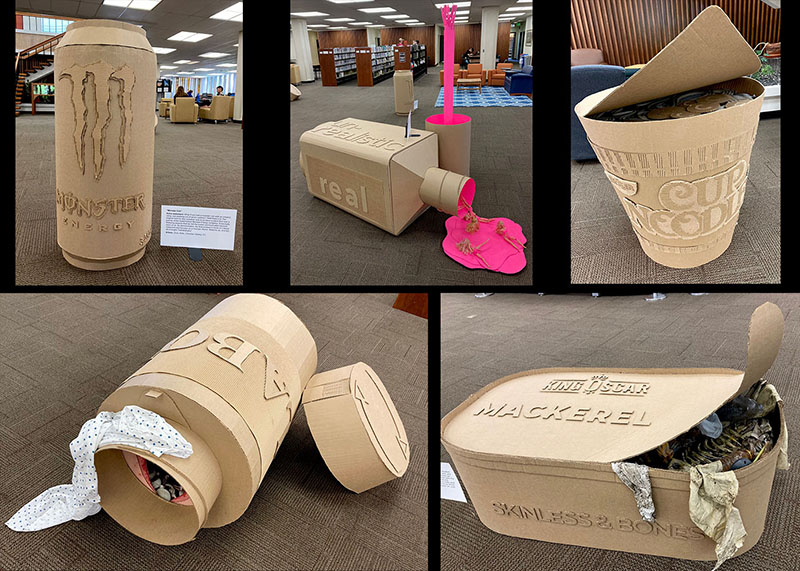Page 124 • (1,496 results in 0.036 seconds)
-
containers can be more easily spilled or their contents can more readily puncture their containment. Filled infectious waste bags or sharps containers may be stored on site for only 7 days prior to treatment or collection for treatment. Additional requirements go into effect after the 7- day period has passed. Please call Facilities Management or Environmental Health & Safety for immediate, unscheduled disposal service. Each department where blood or OPIM are stored or handled must have appropriate
-
persists, it shall be entered into the OSHA Workplace Injury Log for reporting purposes. Workers will be notified in writing within 21 days of determination of an STS. Follow-up Procedures If a comparison of the annual audiogram to the baseline audiogram indicates a standard threshold shift, the Environmental Health & Safety Manager and the supervisor will ensure that the following steps are taken: Employees not using hearing protectors are to be fitted with hearing protectors, trained in their use and
-

semester. It was hard to miss the prevalent pattern in our jam-packed spring calendar: event after event dealing with crucial, relevant justice-related topics, from sexual assault and environmental justice to the removal of indigenous children from families and the youngest voices of the Holocaust. Even better, these topics were the foundations of programs developed and supported all across campus and open, free, to the community—film screenings, discussions, interactive workshops, lectures, rallies
-
A Semester in Trinidad and Tobago One day during the Fall of 2012, senior Aubrey Frimoth recalls a speaker that came to present to her Conservation of Natural Resources class. Why does this presentation, which she saw over two years ago, stick out so clearly in Aubrey’s memory? Captivated by colorful images of dancers, delicious food, and beautiful beaches, the speaker introduced her to the Caribbean island-nation of Trinidad & Tobago. An Environmental Studies major with a Religion minor, the
-
Seanna HewittGraduation Year: 2014 Location: Oaxaca, Mexico Project Title: Qualitative Analysis of Water-Related Issues in the Rio Verde-Atoyac Watershed and Investigation of Alternative Technologies for Water ConservationBrief Summary of Research Project:The Central Valleys of Oaxaca, like many other parts of the world, face an impending water crisis that stems from a variety of factors, ranging from environmental changes to the lack of planned urban development.The Rio Verde-Atoyac Watershed
-
people are at low risk for contracting the virus. Higher levels of risk are associated with some behaviors or environmental conditions; the following chart, provided by the Chicago Department of Health, offers a visual summary of risk for transmission based on activity.Stop the Spread | Stop the Stigma | Know Your Risks Activity Risk Raising for Monkeypox Transmission Direct contact with infectious rash, scabs, or body fluids Sexual or intimate contact (please note that condoms do not protect against
-

go through. These issues are very common and real, and because of that, we wanted the piece to portray a very grounded and real experience. By adding genitalia and the essential items for someone on their period, we hope the piece reflects the experiences and emotions of many. Artists: Gianni Lafave, Jillian Chong, Nataly Reynoso ‘24 “Mackerel on the Beach” Artist statement: This project is about the environmental situation with what is in our ocean and how that affects the water, land, and
-
The art of sustainability reThinking how sustainability is taught at PLU using a novel approach at reDesign House. The art of sustainability By Chris Albert Across the street from the Martin J. Neeb Center sits an old house – not built to the exacting LEED environmental standards of Neeb,… July 11, 2013 Research & AcademicsStudent Life, Resources, Community
-
GardenMon 4/22The Steen Family Symposium for Environmental Issues serves as the keynote of Earth & Diversity Week. Throughout the day, participants are able to participate in various opportunities to explore the concepts of collaboration, trust, and stewardship. This begins discussions exploring trust at DJS Lounge Check In hosted by the DJS Assistants and WSR. As the day progresses, the theme of interconnectedness deepens with discussions on the intersection of human health and environmental well
-
interactions between all living organisms and their environment and how genes and environmental cues act in concert. In the Biology Department she teaches classes in genetics, molecular biology and genomics. Dr. Ellard-Ivey has been actively involved in the Women and Gender Studies Program for two decades at PLU where she has participated in development of the curriculum. She has enjoyed many opportunities to bring her genetics expertise to classes in women and gender studies through teaching in the
Do you have any feedback for us? If so, feel free to use our Feedback Form.


